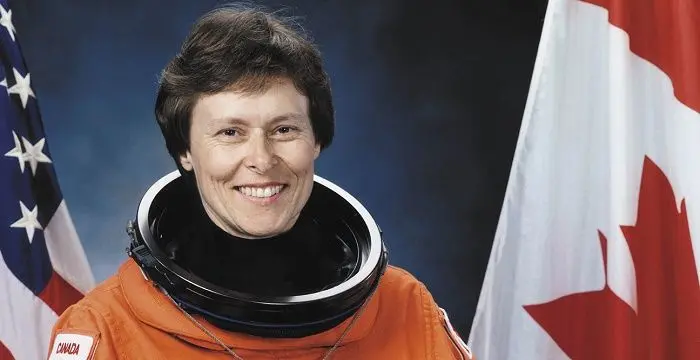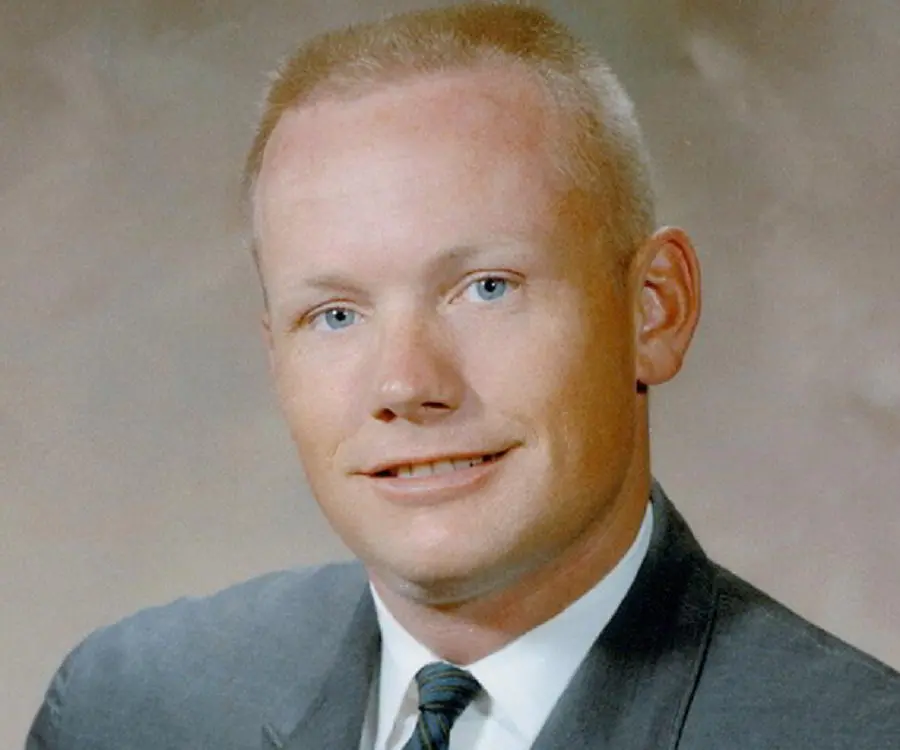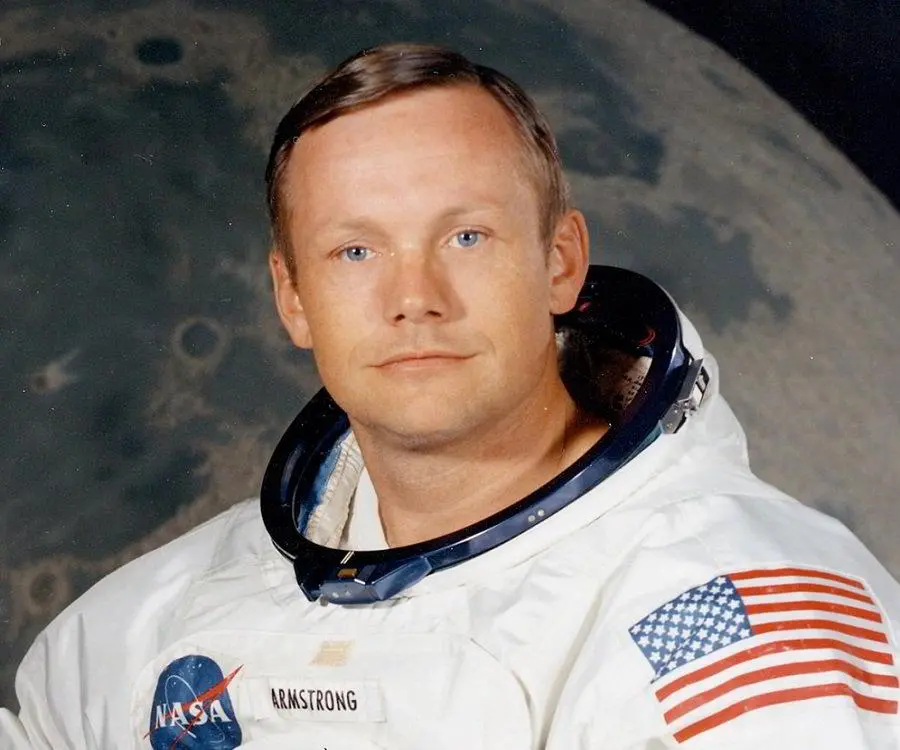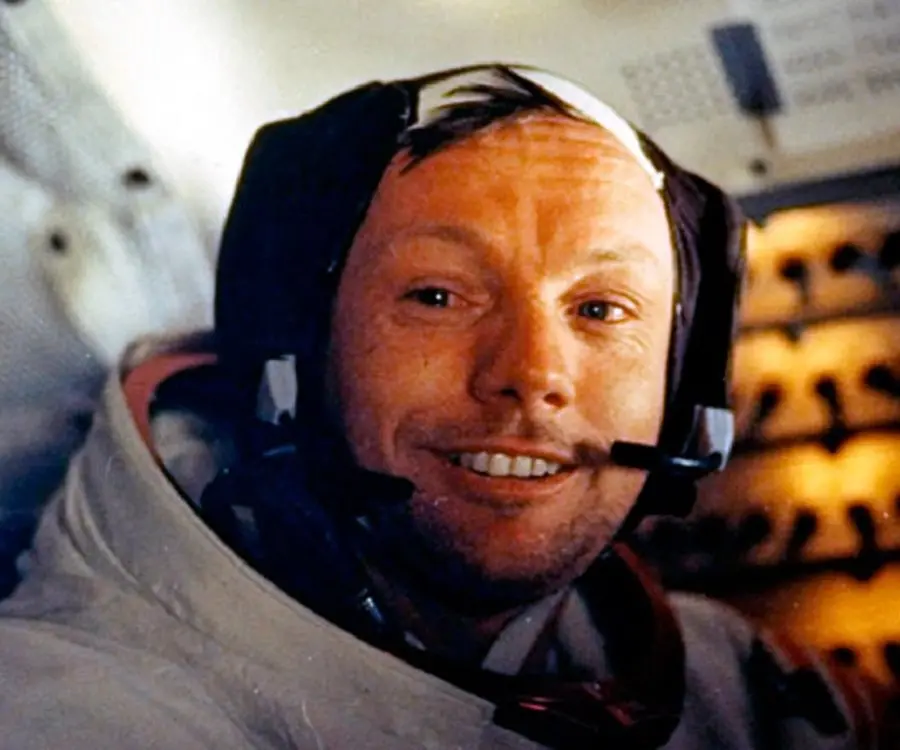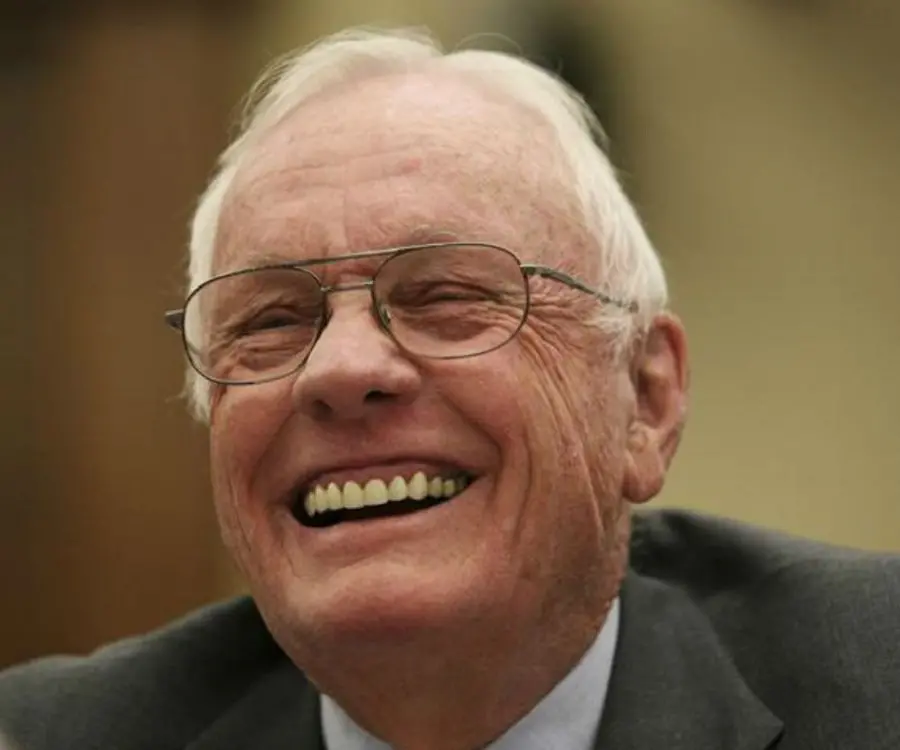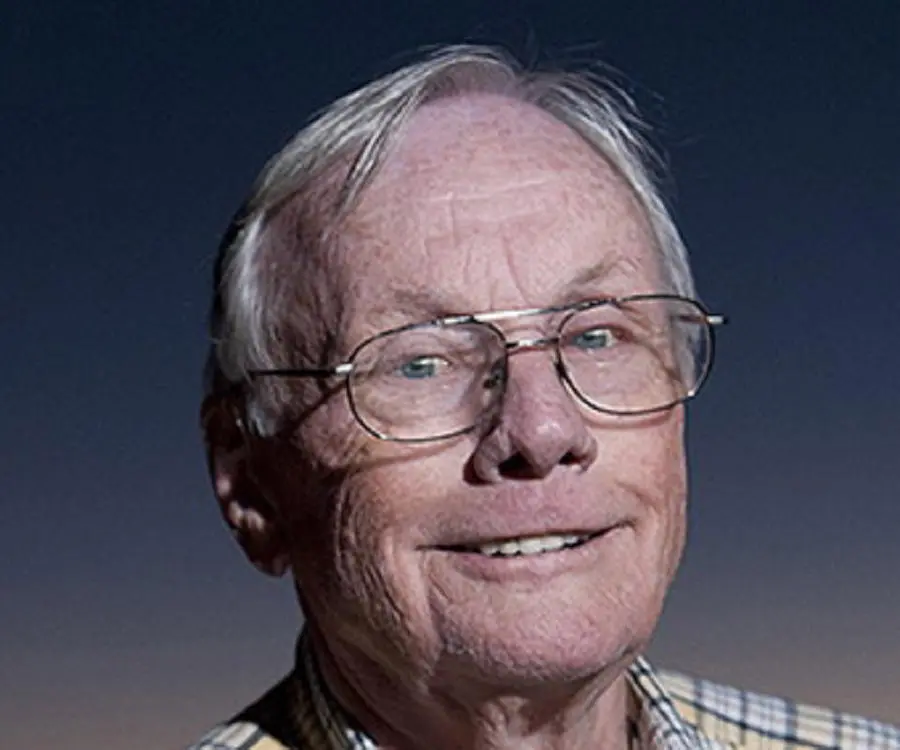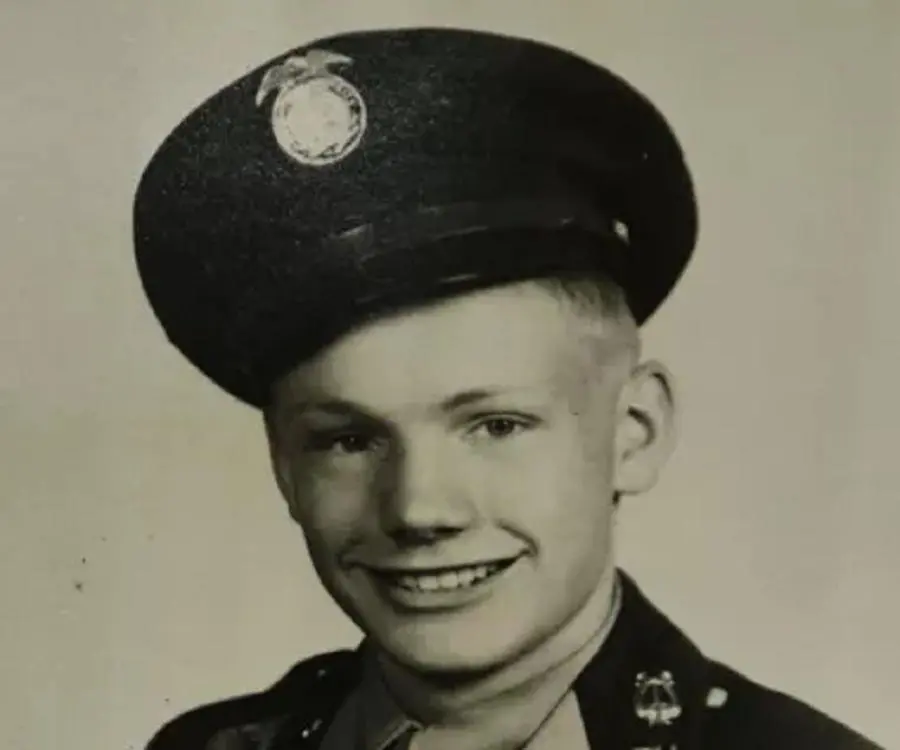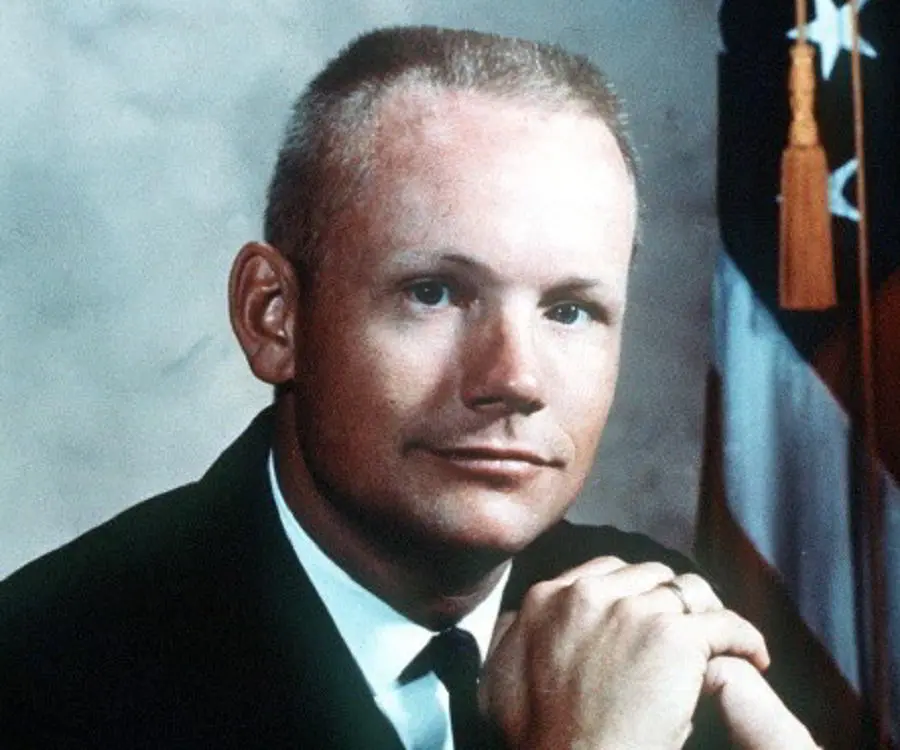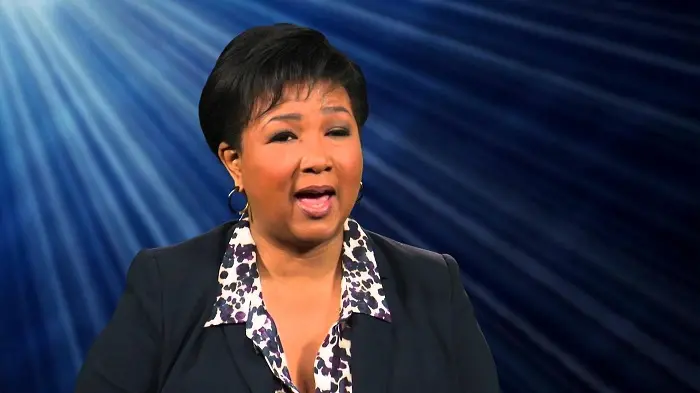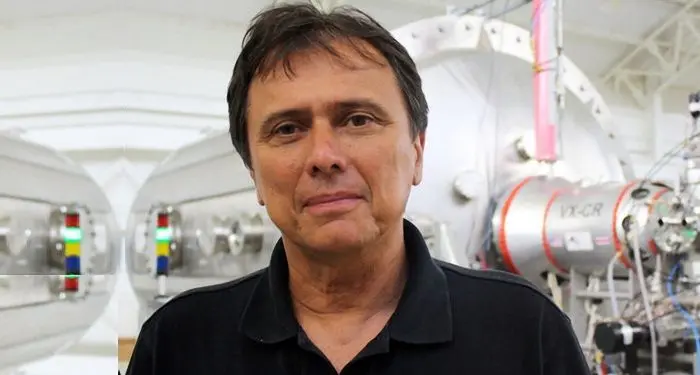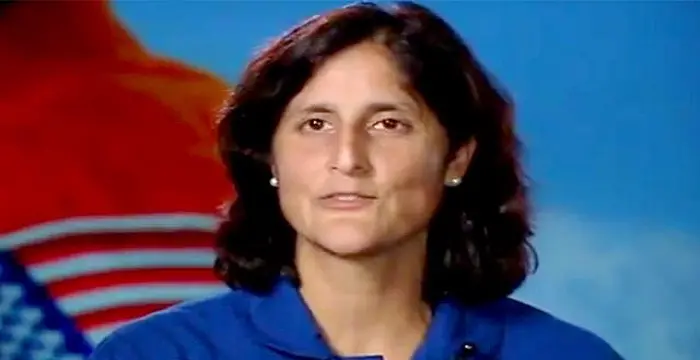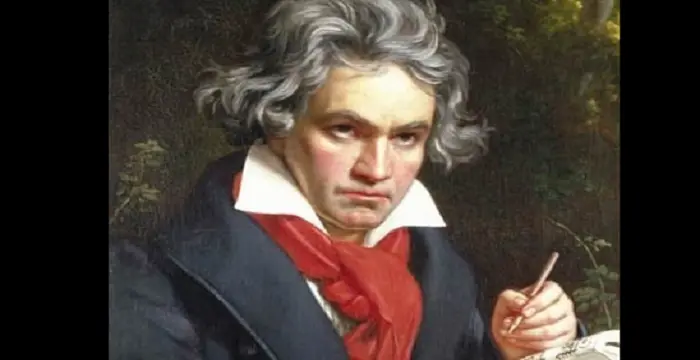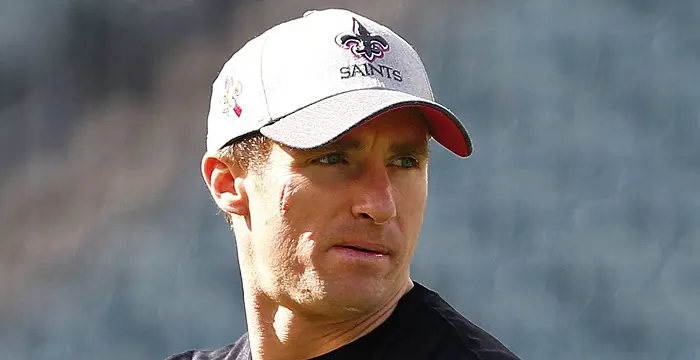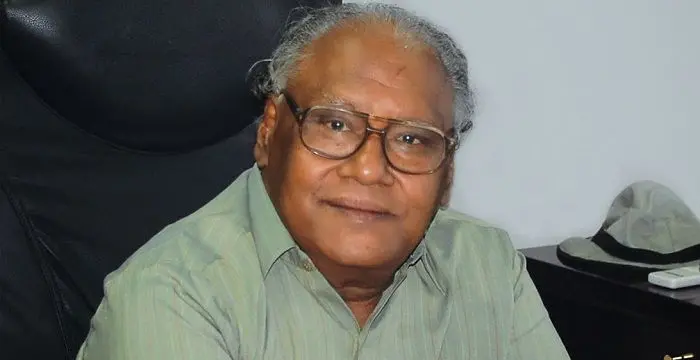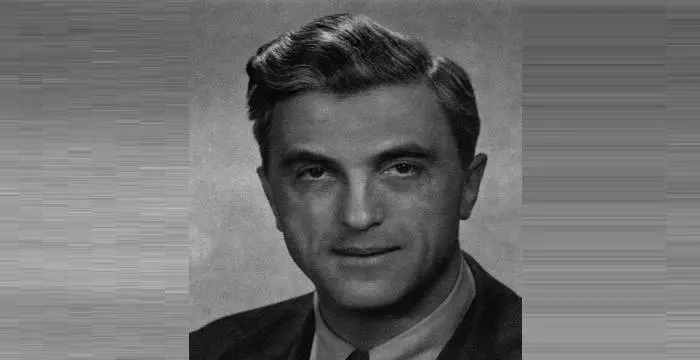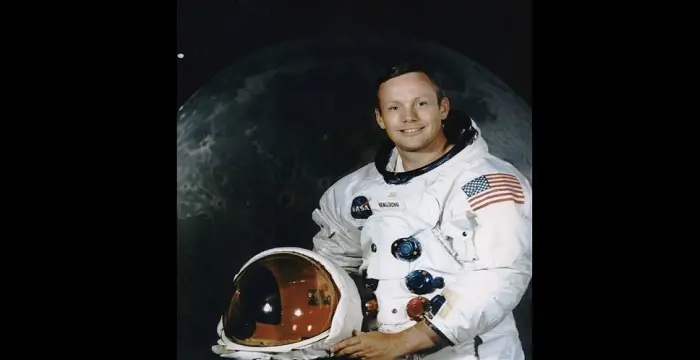
Neil Armstrong - Astronauts, Life Achievements and Family
Neil Armstrong's Personal Details
Neil Armstrong was the first man ever to land on the Moon
| Information | Detail |
|---|---|
| Birthday | August 5, 1930 |
| Died on | August 25, 2012 |
| Nationality | American |
| Famous | Left Handed, Purdue University, Miscellaneous, Astronauts, Astronauts |
| Spouses | Carol Held Knight, Janet Shearon |
| Siblings | Dean Armstrong, June Armstrong |
| Known as | Neil Alden Armstrong |
| Childrens | Eric Armstrong, Karen Armstrong, Mark Armstrong |
| Universities |
|
| Notable Alumnis |
|
| Birth Place | Wapakoneta |
| Gender | Male |
| Father | Stephen Armstrong |
| Mother | Viola Armstrong |
| Sun Sign | Leo |
| Born in | Wapakoneta |
| Famous as | American astronaut |
| Died at Age | 82 |
// Famous Astronauts
Roberta Bondar
Roberta Bondar or Roberta Lynn Bondar is the first Canadian woman to travel into space. This biography of Roberta Bondar provides detailed information about her childhood, life, career, achievements and timeline.
Neil Armstrong's photo
Who is Neil Armstrong?
History was created when Armstrong put his left foot on the surface of Moon, thus becoming the first ever man to place his foot on someplace other than the Earth. He was and for centuries to come, will be regarded as the greatest American hero who created a landmark moment in human history. Trained as an aeronautical engineer, he soon took to being a test pilot and served as the same for a number of years before being selected as an astronaut. Interestingly, all his accomplishments would not have happened in the first place had his friend, Dick Day not placed his application for astronaut with the ones that arrived on time; Armstrong’s application had arrived about a week after the deadline. Armstrong’s first mission into the space was as command pilot of Gemini 8 in 1966. With this, he became the first civilian to fly in space. His second and last space flight occurred three years later in 1969 when he joined Aldrin and Collins aboard Apollo 11 for NASA’s first manned mission to moon. Armstrong spent about two hours walking on the moon surface, collecting samples and conducting experiments. His fiery determination coupled with his heroic demeanour and unwavering team spirit made him a man of virtue and honor. To know in details about his life and profile, scroll further.
// Famous Astronauts
Mae Jemison
Mae Carol Jemison is a famous American astronaut who became the first African American astronaut to travel to space. To know more about her childhood, career, profile and timeline read on
Franklin Chang Díaz
Franklin Chang-Diaz is an American-Costa Rican physicist and former NASA astronaut. This biography profiles his childhood, life, career, achievements and timeline.
Sunita Williams
Sunita Williams is an American astronaut and former US Navy officer. Check out this biography to know about her childhood, family life, achievements and fun facts about her.
Childhood & Early Life
Neil Armstrong was the eldest of the three children born to Stephen Koenig Armstrong and Viola Louise Engel. Since his father was employed as an auditor for the government, much of his early life was spent travelling from one city to the other.
At the age of five, he experienced his first ever airplane flight. This left an indelible mark on the young lad and set the tone for his life.
Academically, he attained his formal education from Blume High School. Alongside, he took flying lessons and earned his student light certificate at the age of 16. He was an active member of the Boy Scouts and soon went up the rank to become Eagle Scout.
A year later in 1947, he enrolled himself at Purdue University to study aeronautical engineering. He was sponsored by the Holloway Plan, under which it was customary for him to serve three years of service in the U.S. Navy,
He was called for the service in 1949, wherein he was asked to report to Naval Air Station Pensacola for flight training. After about 18 months of rigorous training, he finally was qualified as a Naval Aviator on August 1950.
After undertaking a few routine assignments, he saw first action in the Korean War in August 1951, when he flew as an escort for a photo reconnaissance plane over Songjin.
In his three years of Navy career, he flew 78 missions over Korea for a total of 121 hours in the air. He left the Navy on August 23, 1952, and became a Lieutenant, Junior Grade, in the U.S. Naval Reserve, where he served for eight years before resigning in 1960.
Re-joining university, he finally attained his graduation degree in 1955. Further in 1970, he attained a Master of Science degree in Aerospace Engineering from the University of Southern California.
Career
In 1955, with an aim to become an experimental research test pilot, he applied for National Advisory Committee for Aeronautics (NACA). However, due to no open positions, his application was forwarded to the Lewis Flight Propulsion Laboratory in Cleveland, where he began working.
He moved back to NACA after a couple of months. His first assignment was to pilot chase planes during releases of experimental aircraft from modified bombers.
During his seventeen years of service for National Aeronautics and Space Administration NASA (formerly known as NACA), he served in various capacities including as an engineer, test pilot, astronaut and administrator.
As a research pilot, he tested numerous high-speed aircraft, including the X-15, which could reach a top speed of 4,000 miles per hour. Overall, he flew about 200 different models of aircrafts, including jets, rockets, helicopter and gliders.
Year 1958, marked his selection in the U.S. Air Force's Man In Space Soonest program. Two years later, he was chosen as part of the pilot consultant group for the X-20 Dyna-Soar. In 1962, he finally made it in the top seven pilot engineers who would fly space plane.
He became the first American civilian to travel in space. His first mission with the Gemini VII was as Command Pilot, which launched on March 16, 1966. Originally planned to last for 75 hours and 55 orbits, the spacecraft returned 11 hours after its start due to technical problems.
His last assignment for the Gemini program was for Gemini 11, wherein he worked as a back-up Command Pilot. The launch was scheduled for September 12, 1966 with Armstrong as a CAPCOM.
On December 23, 1968, he was appointed to the post of the commander for Apollo 11. Buzz Aldrin was lunar module pilot while Michael Collins served as command module pilot.
The trio landed on the moon on July 20, 1969, a few seconds after 20:17:40 UTC. Armstrong became the first to land on the Moon. His first words were, ‘That's one small step for a man, one giant leap for mankind’.
After a brief walk on the Moon which lasted for about two hours, he re-entered the spacecraft and journeyed back to Earth. They landed in the Pacific Ocean and were picked up by USS Hornet.
After spending 18 days in quarantine, he along with the crew moved around the world as part of a 45-day ‘Giant Leap’ tour. Post his Apollo 11 flight, he announced his plan of not flying in space again.
In 1970, he was appointed as the Deputy Associate Administrator for aeronautics for the Office of Advanced Research and Technology, Advanced Research Projects Agency (ARPA), but served the same for a year, resigning from it and NASA.
He took up a teaching position at the University of Cincinnati in the Department of Aerospace Engineering. He remained in the position for about eight years, resigning in 1979.
Meanwhile, he acted as a spokesperson for several US businesses including General Time Corporation and the Bankers Association of America. Additionally, he was a member of the board of directors of several companies such as Marathon Oil, Learjet, Cinergy, Taft Broadcasting, United Airlines, Eaton Corporation, AIL Systems and Thiokol.
Major Works
With his appointment as an astronaut, he became NASA’s first civilian to fly in space. However, the most spectacular achievement of his life was undertaking the Apollo 11 mission, which was the first manned mission to Moon. He became the first man ever to walk on the Moon surface, which lasted for a little over two hours.
Awards & Achievements
He was conferred with many prestigious awards including Presidential Medal of Freedom, Congressional Space Medal of Honor, Robert H. Goddard Memorial Trophy, Sylvanus Thayer Award and Collier Trophy from the National Aeronautics Association.
Furthermore, he received the Congressional Gold Medal, NASA Distinguished Service Medal, Langley Gold Medal, American Astronautical Society Flight Achievement Award and the John J. Montgomery Award
He was inducted in the Aerospace Walk of Honor and the United States Astronaut Hall of Fame.
An asteroid in space and a lunar crater has been named after him. Furthermore, several schools, institutions, streets, buildings, airports and public squares across the globe have been named after him.
He received the 2013 General James E. Hill Lifetime Space Achievement Award from the Space Foundation.
Personal Life & Legacy
He walked down the aisle with Janet Elizabeth Shearon on January 28, 1956, at the Congregational Church in Wilmette, Illinois. The couple was blessed with three children.
He underwent a bypass surgery to relieve blocked coronary arteries on August 7, 2012. A few days later, on August 25, he breathed his last.
Trivia
He is the first man ever to walk on the surface of the Moon.
// Famous Left Handed
Aidan Gallagher
Aidan Gallagher is a famous American child actor. Check out this biography to know about his childhood, family life, achievements and fun facts about him.
Nicole Kidman
Nicole Kidman is one of the most talented actors that the Hollywood film industry can boast of. Browse through this biography to get detailed information regarding her life, childhood, profile & timeline
Ludwig van Beethoven
Ludwig Van Beethoven was one of the greatest composers the world has ever had. Check out this biography to know about his childhood, family life, and achievements.
Neil Armstrong's awards
| Year | Name | Award |
|---|---|---|
Other | ||
| 1971 | Sylvanus Thayer Award | |
| 1978 | Congressional Space Medal of Honor | |
| 1999 | Langley Gold Medal | |
| 0 | 1978 - Presidential Medal of Freedom | |
| 0 | 2009 - Congressional Gold Medal | |
| 0 | - Collier Trophy | |
Neil Armstrong biography timelines
- // 5th Aug 1930Neil Armstrong was the eldest of the three children born to Stephen Koenig Armstrong and Viola Louise Engel. Since his father was employed as an auditor for the government, much of his early life was spent travelling from one city to the other.
- // 1947A year later in 1947, he enrolled himself at Purdue University to study aeronautical engineering. He was sponsored by the Holloway Plan, under which it was customary for him to serve three years of service in the U.S. Navy,
- // 1949 To 1950He was called for the service in 1949, wherein he was asked to report to Naval Air Station Pensacola for flight training. After about 18 months of rigorous training, he finally was qualified as a Naval Aviator on August 1950.
- // 1951After undertaking a few routine assignments, he saw first action in the Korean War in August 1951, when he flew as an escort for a photo reconnaissance plane over Songjin.
- // 1952 To 1960In his three years of Navy career, he flew 78 missions over Korea for a total of 121 hours in the air. He left the Navy on August 23, 1952, and became a Lieutenant, Junior Grade, in the U.S. Naval Reserve, where he served for eight years before resigning in 1960.
- // 1955Re-joining university, he finally attained his graduation degree in 1955. Further in 1970, he attained a Master of Science degree in Aerospace Engineering from the University of Southern California.
- // 1955In 1955, with an aim to become an experimental research test pilot, he applied for National Advisory Committee for Aeronautics (NACA). However, due to no open positions, his application was forwarded to the Lewis Flight Propulsion Laboratory in Cleveland, where he began working.
- // 28th Jan 1956He walked down the aisle with Janet Elizabeth Shearon on January 28, 1956, at the Congregational Church in Wilmette, Illinois. The couple was blessed with three children.
- // 1958Year 1958, marked his selection in the U.S. Air Force's Man In Space Soonest program. Two years later, he was chosen as part of the pilot consultant group for the X-20 Dyna-Soar. In 1962, he finally made it in the top seven pilot engineers who would fly space plane.
- // 16th Mar 1966He became the first American civilian to travel in space. His first mission with the Gemini VII was as Command Pilot, which launched on March 16, 1966. Originally planned to last for 75 hours and 55 orbits, the spacecraft returned 11 hours after its start due to technical problems.
- // 1968On December 23, 1968, he was appointed to the post of the commander for Apollo 11. Buzz Aldrin was lunar module pilot while Michael Collins served as command module pilot.
- // 20th Jul 1969The trio landed on the moon on July 20, 1969, a few seconds after 20:17:40 UTC. Armstrong became the first to land on the Moon. His first words were, ‘That's one small step for a man, one giant leap for mankind’.
- // 1970 To 1971In 1970, he was appointed as the Deputy Associate Administrator for aeronautics for the Office of Advanced Research and Technology, Advanced Research Projects Agency (ARPA), but served the same for a year, resigning from it and NASA.
- // 1971 To 1979He took up a teaching position at the University of Cincinnati in the Department of Aerospace Engineering. He remained in the position for about eight years, resigning in 1979.
- // 25th Aug 2012He underwent a bypass surgery to relieve blocked coronary arteries on August 7, 2012. A few days later, on August 25, he breathed his last.
// Famous Purdue University
Gus Grissom
Gus Grissom was an American astronaut, mechanical engineer, and US test pilot. Check out this biography to know about his childhood, family life, achievements and fun facts about him.
Drew Brees
Drew Brees is an established American football quarterback for NFL’s New Orleans Saints. This biography profiles his childhood, life, football career, achievements, and gives some fun facts.
Elizabeth Shatner
Elizabeth Shatner is the wife of popular Canadian actor William Shatner. Check out this biography to know about her birthday, childhood, family life, achievements and fun facts about her.
C. N. R. Rao
C.N.R. Rao is an Indian solid state and materials chemist. This biography of CNR Rao provides detailed information about his childhood, life, career, research, achievements and timeline.
Edward Mills Purcell
Edward Mills Purcell was a well-known American physicist. This biography profiles his childhood, life, research, achievements and timeline.
Neil Armstrong's FAQ
What is Neil Armstrong birthday?
Neil Armstrong was born at 1930-08-05
When was Neil Armstrong died?
Neil Armstrong was died at 2012-08-25
Where was Neil Armstrong died?
Neil Armstrong was died in Cincinnati
Which age was Neil Armstrong died?
Neil Armstrong was died at age 82
Where is Neil Armstrong's birth place?
Neil Armstrong was born in Wapakoneta
What is Neil Armstrong nationalities?
Neil Armstrong's nationalities is American
Who is Neil Armstrong spouses?
Neil Armstrong's spouses is Carol Held Knight, Janet Shearon
Who is Neil Armstrong siblings?
Neil Armstrong's siblings is Dean Armstrong, June Armstrong
Who is Neil Armstrong childrens?
Neil Armstrong's childrens is Eric Armstrong, Karen Armstrong, Mark Armstrong
What was Neil Armstrong universities?
Neil Armstrong studied at Purdue University, University of Southern California, (1970), Purdue University, (1947 – 1955), Blume High School, (1947)
What was Neil Armstrong notable alumnis?
Neil Armstrong's notable alumnis is Purdue University
Who is Neil Armstrong's father?
Neil Armstrong's father is Stephen Armstrong
Who is Neil Armstrong's mother?
Neil Armstrong's mother is Viola Armstrong
What is Neil Armstrong's sun sign?
Neil Armstrong is Leo
How famous is Neil Armstrong?
Neil Armstrong is famouse as American astronaut
